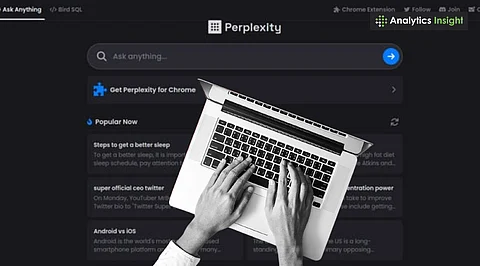

Perplexity AI favours structured, authoritative, and concise content from trusted sources.
New rules prioritise entity-based relevance, freshness, and clear formatting.
Generative Engine Optimization (GEO) is essential for AI-driven discoverability.
In this shifting landscape, AI Search Visibility Platform like Wellows help brands understand how visible they are across AI engines such as Perplexity. Wellows shows where a brand is mentioned, where it’s missing, and what can be improved making it easier for teams to stay discoverable in an AI-first search world.
With the sands of digital publishing shifting all around us, AI generative platforms such as Perplexity AI are becoming new gatekeepers with immense power. Unlike those old AI search engines, Perplexity doesn’t just point users toward relevant links. It summarizes answers, sources, and quotes and rejects low-quality stuff altogether.
That translates into a wholesale rewriting of the rules for visibility: it’s not about ranking page one anymore; it’s about being quoted as the answer. For journalists, teachers, bloggers, and brands, it’s no longer merely how to be discovered, but how to be trusted and referenced by computers.
Behind Perplexity’s algorithm is a three-tier machine learning system called L3 reranking. After initial results are retrieved, the system searches for semantic depth, topical authority, and clarity. That’s quite a departure from Google-style SEO, where backlinks and keyword density tend to weigh more heavily.
Named entity content in the form of people, organizations, events, or concepts is one of the preferred AI SEO strategies. The algorithm leans towards an authoritative tone and recognizable authority. Thus, if you’re writing on climate change, a quote from NASA or the IPCC is heavier than a blog quote.
There has been a pattern throughout Perplexity’s output: sites such as GitHub, Amazon, Wikipedia, Coursera, and scholarly journals consistently appear. These sources have what experts call a ‘trust tier advantage.’ Perplexity scores them as inherently trustworthy. But that does not preclude smaller sites from running.
Independent publishers must build domain credibility, print new research, and have transparent editorial standards to compete. Verified authorship, fact consistency, and conformity with recognized data sources all contribute to your algorithmic trust rating.
Indeed. One of the most obvious lessons from AI-first platforms is that structure is just as important as substance. Perplexity is more likely to reference pages with easily parsed structures: consider FAQ sections, question-based subheads, and summaries.
Disorganized layouts, walls of text, or hidden insights can drown your content. Well-structured HTML structure, readable headings, and friendly formats are more likely to surpass Perplexity’s filters. Brevity is favored. Filler is punished.
Much more than in the past. Recency is not an added value; it’s usually a necessity. Perplexity heavily prefers content recently updated during the previous six to twelve months, particularly for rapidly evolving subjects such as AI, politics, finance, or health.
Early metrics of engagement, clicks, shares, and backlinks also impact visibility. That implies timing is everything. Breaking news when it’s timely and having the content quoted by mainstream platforms can provide an initial boost that Perplexity will recall.
Although Perplexity is text-dominant, it considers whether a page contains videos, infographics, charts, or high-visuals. Adding a relevant YouTube explainer or including a labelled chart will assist in moving content up the citation chain, particularly if those assets also link from respected sites.
This pattern reflects Google Discover, where visually rich pages experience greater engagement. Yet in Perplexity’s instance, these components also serve as trust indicators.
As AI becomes the default search interface, there’s a new approach in the works: Generative Engine Optimization, or GEO. Unlike old-school SEO, GEO is about making content understandable to AI models, not humans.
It involves:
Organizing answers in question-answer format.
Utilizing schema markup to set up FAQs.
Predicting follow-up questions in the copy.
Writing with simple, declarative language.
It’s about preparing your content for a conversation, not merely a crawl.
The rise of platforms like Perplexity marks a turning point. We’re entering a post-SEO era, where content must appeal to human readers and machine summarizers. For journalists and publishers, this is both a disruption and an opportunity.
In this AI-first world, the victors will be those who write clearly, refresh frequently, organize wisely, and speak with confidence. Being quotable by others and by algorithms is the new benchmark of digital importance.
1. How does Perplexity rank content?
Perplexity ranks content using a machine learning system that prioritizes trustworthy, structured, and up-to-date sources with clear, concise answers aligned with user queries.
2. What content formats does Perplexity prefer?
It favors FAQ-style content, question-based headings, structured summaries, and schema markup, formats that are easy for AI to parse and cite in direct answers.
3. Does domain authority matter on Perplexity?
Yes. Content from trusted domains like Wikipedia, GitHub, and academic sites is ranked higher. Independent creators must build credibility through expertise, citations, and a clean editorial structure.
4. Is multimedia content ranked higher?
Yes. Content that includes images, infographics, or embedded videos, especially from reliable sources, tends to perform better due to enhanced user engagement and information depth.
5. How often should content be updated?
To maintain visibility, update content every 6–12 months. Perplexity favours fresh, timely information, especially for fast-evolving topics like AI, finance, or health.
